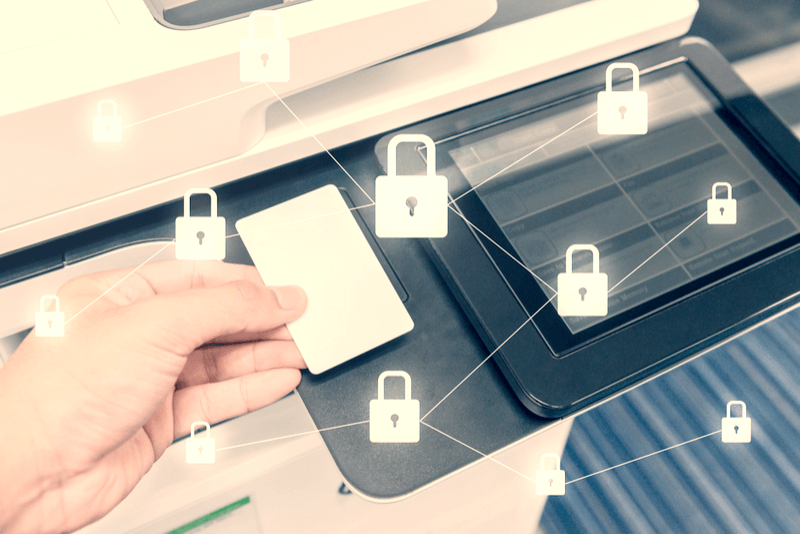
In contrast to desktops or servers, the topic of security plays a minor role in printers in many companies. But modern network printers are today’s own computers. Without appropriate security, they can easily become a security risk – for companies, this can have serious consequences. How secure printing in the company is made possible, IT decision makers learn here.
A classic scene from everyday office life: A printer with network interfaces, main memory, and a processor is on the floor of a company. The employees of the floor print all sorts of documents via this device. So besides insignificant notes also sensitive personal data. They also scan files or send them by e-mail.
Without safeguarding the printer, numerous vulnerabilities are revealed – both internally and externally. Internally, for example, each employee can answer and read each printed document if user authentication is not required at the printer. Sensitive data can be a problem.
Unsecured printers are also extremely risky externally. For example, hackers can use the smartphone to install malware on the printer. The malware is hidden in the data stream of the printer. As a result, the company’s firewall does not recognize the malware as such. The printer acts as a way to bypass the corporate firewall. For example, hackers gain access to all printer data such as scans, faxes or printouts that are “lying around” unencrypted. Of course, this can also include sensitive data.
Unsafe printers in many companies still the rule
Despite high security risks, security is still in its infancy for printers. According to an HP-commissioned study by Spiceworks, a social network of IT professionals, only 18 percent of IT decision makers worry about the security of their printers. For comparison, 77 percent of servers and 91 percent of desktops. A total of 107 IT professionals in companies with more than 250 employees were surveyed for the globally conducted study.
In addition, another study commissioned by HP from the Ponemon Institute has revealed that just 4 in 10 network printers are actually protected against outside access.
To draw attention to the problem, a hacker printed unsolicited pages on 150,000 printers in February of this year. On it was funny graphics of robots – attached with the note, in the future, please pay more attention to the security.
How to protect your company’s printers
One of the manufacturers that aggressively addresses the issue and offers security solutions for printers is HP Inc. The company unveiled a reissue of its managed print services focused on improving the security of network printers. In addition, HP Inc. presented new security services and software.
Security features are integrated with HP Laser Jet (laser printer) and HP PageWide Enterprise (new generation of inkjet printers).
Important safety features: an excerpt
- Sure Start: This allows the printer’s BIOS to be automatically checked – this ensures that the printer is protected against hacker attacks. Checking the BIOS occurs every time the printer is turned on or restarted with an error. It implements a secure hash algorithm signed by HP’s digital signature. If the scan fails, the printer restarts with a secure copy of the BIOS.
- Secure White Listing: An HP digital signature ensures that only known HP firmware versions are loaded. For example, the printer accepts only files with authentic digital HP signature. If a file does not have this signature – this is the case, for example, with potential malware – the printer does not load this file but restarts. This prevents the printer from running any potential malware.
- Pull-PIN Print Solutions: In contrast to traditional push printing, where the user orders a print job, whereupon the printer immediately prints out the respective document, the print job ordered is first stored in a secure database for pull printing. In order to be able to subsequently print the document, the user must authenticate himself at the printer. This authentication can be done, for example, via a PIN or via the ID. This prevents unauthorized persons from taking printed documents.
Contact Bleuwire™ to learn about services and solutions – how we can help your business.





